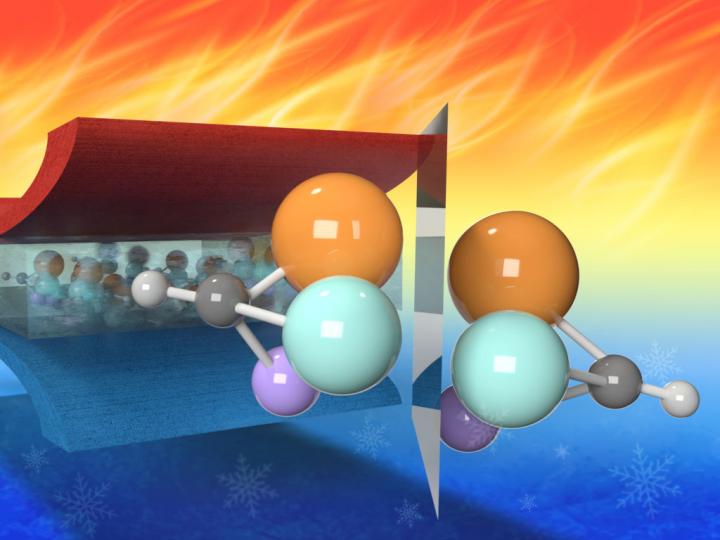
Credit: MRI, Penn State
A new fundamental understanding of polymeric relaxor ferroelectric behavior could lead to advances in flexible electronics, actuators and transducers, energy storage, piezoelectric sensors and electrocaloric cooling, according to a team of researchers at Penn State and North Carolina State.
Researchers have debated the theory behind the mechanism of relaxor ferroelectrics for more than 50 years, said Qing Wang, professor of materials science and engineering at Penn State. While relaxor ferroelectrics are well-recognized, fundamentally fascinating and technologically useful materials, a Nature article commented in 2006 that they were heterogeneous, hopeless messes.
Without a fundamental understanding of the mechanism, little progress has been made in designing new relaxor ferroelectric materials. The new understanding, which relies on both experiment and theoretical modeling, shows that relaxor ferroelectricity in polymers comes from chain conformation disorders induced by chirality. Chirality is a feature of many organic materials in which molecules are mirror images of each other, but not exactly the same. The relaxor mechanism in polymers is vastly different from the mechanism proposed for ceramics whose relaxor behavior originates from chemical disorders.
“Different from ferroelectrics, relaxors exhibit no long-range large ferroelectric domains but disordered local polar domains,” Wang explained. “The research in relaxor polymeric materials has been challenging owing to the presence of multiple phases such as crystalline, amorphous and crystalline-amorphous interfacial area in polymers.”
In energy storage capacitors, relaxors can deliver a much higher energy density than normal ferroelectrics, which have high ferroelectric loss that turns into waste heat. In addition, relaxors can generate larger strain under the applied electric fields and have a much better efficiency of energy conversion than normal ferroelectrics, which makes them preferred materials for actuators and sensors.
Penn State has a long history of discovery in ferroelectric materials. Qiming Zhang, professor of electrical engineering at Penn State, discovered the first relaxor ferroelectric polymer in 1998, when he used an electron beam to irradiate a ferroelectric polymer and found it had become a relaxor. Zhang along with Qing Wang also made seminal discoveries in the electrocaloric effect using relaxor polymers, which allows for solid state cooling without the use of noxious gases and uses much less energy than conventional refrigeration.
“The new understanding of relaxor behavior would open up unprecedented opportunities for us to design relaxor ferroelectric polymers for a range of energy storage and conversion applications,” said Wang.
###
Their work, “Chirality-induced relaxor properties in ferroelectric polymers,” appears today, June 29, in the journal Nature Materials. The lead author is Yang Liu, a postdoctoral scholar in Wang’s group. Co-authors Wenhan Xu and Aziguli Haibibu are former graduate students in Wang’s group. Zhubing Han is Wang’s current graduate student. Bing Zhang is a graduate student in Professor J. Berholc’s group at North Carolina State University, and Wenchang Lu is a research associate in Berholc’s group.
The U.S. Air Force Office of Scientific Research and the U.S. Office of Naval Research funded this research. The National Science Foundation provided supercomputer time at the National Center for Supercomputing Applications.
Media Contact
A’ndrea Elyse Messer
[email protected]
Related Journal Article
http://dx.




